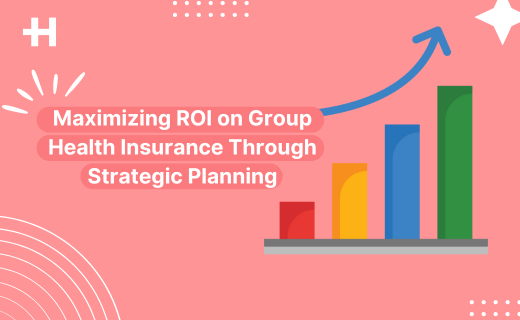Group health insurance has transcended its role as a mere employee perk to become an indispensable component of comprehensive benefits packages. However, the escalating costs of healthcare have placed immense pressure on businesses, necessitating a strategic approach to insurance management. By effectively planning and implementing a data-driven strategy, organizations can optimize their group health insurance investments, maximizing return on investment (ROI) while ensuring the well-being of their workforce.
Table of Contents
Understanding the Cost Dynamics of Group Health Insurance
The cost of group health insurance is influenced by a complex interplay of factors, including employee demographics, coverage levels, and prevailing healthcare trends. The rising costs of prescription drugs, chronic disease management, and mental health services have significantly impacted insurance premiums. Furthermore, industry-specific factors, such as the nature of work and associated health risks, can also influence insurance costs. For instance, manufacturing companies might face higher claims due to potential workplace injuries, while technology firms may encounter increased costs related to stress-related ailments.
Leveraging Financial Modeling for Strategic Decision-Making
Financial modeling emerges as one of the powerful tool for navigating the complexities of group health insurance. By inputting relevant data, such as employee demographics, claims history, and provider rates, organizations can generate accurate projections of insurance costs. This data-driven approach enables businesses to identify cost-saving opportunities, evaluate the impact of different coverage options, and make informed decisions. Advanced modeling techniques, including scenario analysis and sensitivity analysis, can further enhance the decision-making process by exploring various possibilities and assessing the potential consequences of different choices.
Strategies for Maximizing ROI on Group Health Insurance
To optimize ROI on group health insurance, organizations can implement a combination of strategic initiatives:
- Customizing Coverage Plans: Tailoring insurance plans to meet the specific needs of employees can lead to cost savings without compromising coverage. By offering a variety of plan options and encouraging employees to help select a plan that align with their healthcare needs, businesses can promote cost-consciousness.
- Incentivizing Wellness Programs: Promoting employee well-being through comprehensive wellness programs can yield significant cost reductions. By offering incentives for participation in fitness activities, preventive screenings, and health education, organizations can encourage healthier lifestyles, lower claims, and improve overall employee productivity.
- Regular Review and Adjustment: The healthcare landscape is dynamic, necessitating continuous monitoring and adjustment of insurance plans. By regularly reviewing insurance coverage and making data-driven changes, organizations can ensure that their plans remain aligned with the evolving needs of employees and the business.
- Leveraging Technology: Incorporating technology into healthcare management can streamline processes, improve efficiency, and reduce costs. Telemedicine, wearable devices, and health management apps can facilitate preventive care, chronic disease management, and employee engagement.
Employee Engagement and Health Outcomes
Engaging employees in health and wellness initiatives is crucial for achieving optimal outcomes. By fostering a culture of well-being, organizations can improve employee morale, reduce absenteeism, and enhance productivity. Investing in employee health not only benefits individuals but also contributes to the overall success of the business.
Emerging Trends in Group Health Insurance
The healthcare industry is undergoing rapid transformation, with emerging trends shaping the future of group health insurance. Value-based care, which emphasizes quality outcomes over volume of services, is gaining traction. Artificial intelligence (AI) is being leveraged to analyze data, identify patterns, and improve decision-making. By staying abreast of these trends, businesses can proactively adapt their insurance strategies and capitalize on new opportunities.
The Benefits of a Data-Driven Approach
A data-driven approach to group health insurance offers numerous advantages:
- Improved Decision-Making: By leveraging data analytics, organizations can gain valuable insights into cost drivers, employee utilization patterns, and the effectiveness of various programs. This information empowers decision-makers to make informed choices that optimize insurance spending.
- Enhanced Cost Management: Data analysis can help identify areas of cost overutilization, such as high-cost medications or unnecessary procedures. By targeting these areas, organizations can implement cost-saving measures and control healthcare expenses.
- Improved Employee Well-being: A data-driven approach enables organizations to tailor wellness programs to specific employee needs, leading to improved health outcomes and increased employee satisfaction.
- Risk Mitigation: By analyzing data, organizations can identify potential risks and develop strategies to mitigate them. This proactive approach helps protect the business from financial losses and ensures the continuity of healthcare benefits.
Strategic planning and a data-driven approach are essential for maximizing ROI on group health insurance. By understanding cost dynamics, leveraging financial modeling, implementing effective strategies, and engaging employees in wellness initiatives, organizations can optimize their insurance investments, control costs, and enhance employee well-being. Healthysure offers a comprehensive solution to help businesses achieve these goals. With our advanced financial modeling tools, expert guidance, and access to a wide range of top insurers, we provide best-in-class pricing, full customization, and 5-star claim support. Let us help you create a health benefits package that drives employee satisfaction, improves productivity, and strengthens your bottom line..



